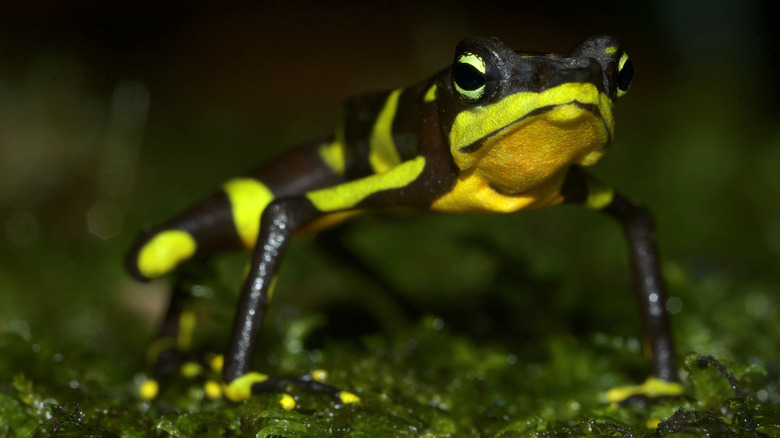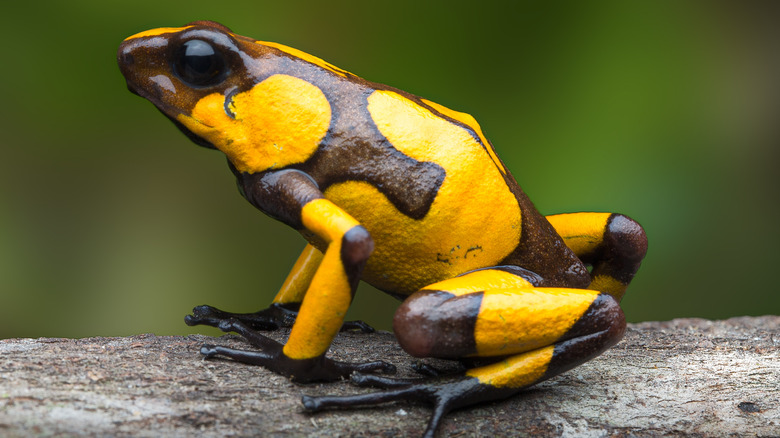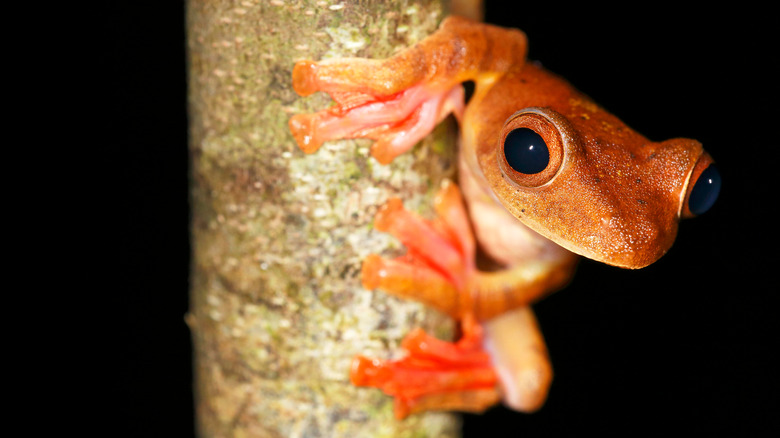A Frog Species Once Thought To Be Extinct Is Making A Comeback
These days, it may seem like most headlines about the environment are bad, with as many as .1% of all species threatened by extinction each year, according to World Wildlife Foundation estimates. Annually, that's as many as 2,000 animal species potentially gone from planet Earth. And as Amphiaweb notes, amphibian species like frogs are among the hardest hit. According to a 2022 study published on Science Direct, though, there's some good news to announce: Based on the findings of an international team of researchers, one genus of amphibians with many species previously thought to have gone extinct have been rediscovered. And some of those frog species re-emerged after more than half a century hidden from view, as Science News goes on to explain.
Once common in parts of Central and South America, these recovering frog species are still endangered due to the small numbers found. Explaining how some of these frogs beat the odds and survived could provide a blueprint for conservationists, as they seek to help other amphibian species overcome climate change and other ecological factors that threaten them.
Many harlequin frogs were thought to have been wiped out by a fungus
According to Endangered Species International, harlequin frogs are a genus of at least 80 small-to-medium sized and brightly-colored frog species that were once common in neotropical areas like Costa Rica and Bolivia. For a number of reasons, including increased global temperatures, threatened habitat, and an outbreak of a skin fungus called chytrid — to which amphibians are particularly sensitive — scores of harlequin frogs were thought to have gone extinct in the 1980s, with many more species threatened. Meanwhile, some species of harlequin frog disappeared as long ago as the 1950s.
According to "Harlequin frog rediscoveries provide insights into species persistence in the face of drastic amphibian declines", published in December, 2022 on Science Direct, some 37% of all harlequin frogs once thought extinct are actually still living, though in such small numbers that they're considered endangered. On the news announced in the frog study, University of Colorado Boulder disease ecologist Valerie McKenzie, who did not participate in the research, said these findings offer hope that other hard-to-observe species may have also recovered. Speaking with Science News, McKenzie said, "It motivates me to think we should go look for them."
Small numbers of Jambato frogs were the first species to re-emerge
Based on further reporting from Science News, the first clue that some harlequin frog species once thought to have gone extinct may still exist first appeared around 2016 when a tiny number of Jambato frogs were found living in Ecuador. Encouraged by the discovery, scientists began to hunt territory where harlequin frogs were once common and through that work, many more species were found. At first, researchers thought frogs living at lower elevations might be better at withstanding the fungus which itself flourishes at high elevations due to the lower temperatures. That turned out not to be the case: Small numbers of surviving harlequin frog populations were found at both low and high elevations, so there must be some other factor at play, as Science reports.
Among other possibilities, leading theories as to why the frogs may be on the rebound could be the lessening lethality of the fungus over time, or an improved amphibian immune system that's better suited to fight off infection. Certain individual harlequin frogs may just be less vulnerable to the fungus. Finding these frog populations is a good sign, but as mentioned, all are still considered threatened. As Michigan State University in Hickory Corners conservation biologist Kyle Jaynes put it, "We've got a second chance here ... But there is still a lot we have to do to conserve these species."


